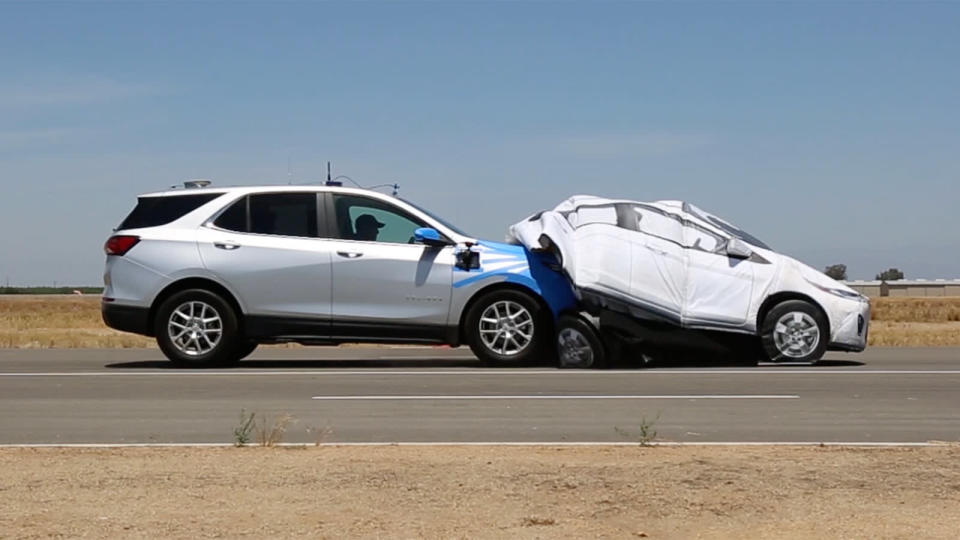AAA study shows automatic emergency braking has its limits

Automatic emergency braking (AEB) systems, ones that apply the brakes automatically if the driver fails to intervene to prevent a collision or reduce its severity, have proven to be very helpful in reducing numbers of crashes. A past IIHS study found that cars with automatic emergency braking were in 50% fewer rear-end collisions. Systems that include pedestrian detection are also very effective, with equipped cars having 27% fewer collisions with pedestrians. But there are limits to these systems, and specifically in areas where collisions are fairly common. IIHS has previously noted that poor light can reduce the effectiveness of these systems. Now AAA has found that higher speeds and particular types of collisions need improvement.
The situations AAA tested included rear-end collisions at higher speeds than IIHS currently tests. The IIHS tests at speeds up to 25 mph. In its research, AAA found that 60% of rear-end crashes that result in injuries happen in areas with speed limits between 30 and 45 mph. As such, it tested systems at 30 mph and 40 mph with stationary dummy vehicles. AAA also tested with the other two most common injury-causing two-vehicle crashes that, when combined with rear-end collisions, result in 79% of injury-causing wrecks: T-bone collisions, and collisions with an oncoming car turning across traffic. These were tested at 30 mph. The test vehicles were popular models that come with standard automatic emergency braking that more people are likely to have and cover a wide array of designs and suppliers: a 2022 Chevy Equinox, 2022 Ford Explorer, 2022 Honda CR-V and 2022 Toyota RAV4.
While these collision prevention systems were designed for preventing lower-speed crashes, they proved to still be effective in reducing the severity of rear-end collisions. At 30 mph, every car alerted the driver to an impending collision and activated the brakes. The Toyota and Ford both managed to avoid a crash in all five attempts, too. The Equinox collided once, and the CR-V did twice, but in all those situations, both cars reduced speeds by more than 20 mph, reducing the severity.
Increasing the speeds to 40 mph resulted in more collisions, but still, every car raised a warning and applied the brakes. The Ford reduced speeds by 31.8 mph, despite hitting every time. The Equinox reduced speeds by 17.5 mph, which was less than the 30 mph test. The CR-V managed to avoid crashes twice, and it reduced the speed by 30.5 mph on average in collisions. The RAV4 had a somewhat confusing result. It managed to fully stop four out of the five times. But the time it did hit, it only dropped its speed by 7.9 mph.


 Yahoo Autos
Yahoo Autos 
